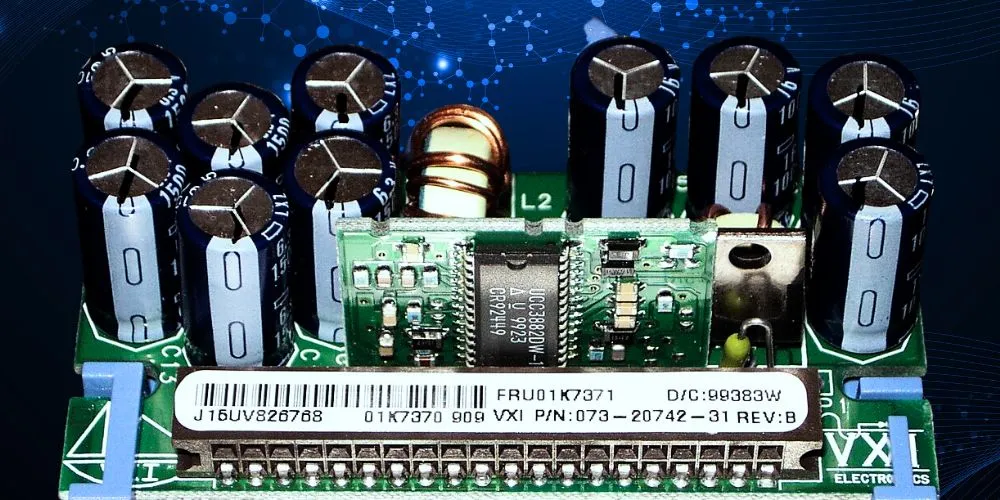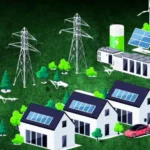Voltage regulation is a critical aspect of electrical engineering and power distribution, playing a vital role in maintaining the stability and efficiency of electrical systems. In a world where electricity is the lifeblood of modern society, voltage regulation is paramount. This comprehensive exploration delves into voltage regulation, uncovering its significance, applications across various sectors, and its transformative potential for ensuring a reliable and efficient electrical supply.
The Significance of Voltage Regulation
Voltage regulation represents a fundamental shift in controlling and managing electrical power. These technologies provide utilities, industries, and consumers with the means to maintain consistent voltage levels, prevent electrical disturbances, and enhance the performance and longevity of electrical equipment. This shift towards advanced voltage regulation carries substantial implications, from improved energy efficiency to increased equipment reliability and overall system stability.
Equipment Reliability
One of the primary benefits derived from voltage regulation is the increased reliability of electrical equipment. In a world driven by technology and automation, the dependable operation of machinery and electronic devices is paramount. Consistent voltage levels prevent equipment from experiencing voltage sags, surges, or fluctuations that can cause premature wear and damage. This reliability reduces maintenance costs and ensures critical systems continue functioning as intended, whether in manufacturing plants or data centers.
Energy Efficiency
Voltage regulation contributes to improved energy efficiency by maintaining optimal voltage levels. Overvoltage or undervoltage conditions can lead to increased energy consumption, as electrical equipment operates less efficiently when subjected to voltage extremes. With precise voltage control, electrical systems can operate within their designed parameters, minimizing energy waste and reducing operational costs. Enhanced energy efficiency benefits individual consumers and reduces the overall environmental footprint of electricity generation.
Grid Stability
Voltage regulation is pivotal in maintaining grid stability and is essential for a reliable and resilient electrical supply. Modern societies rely heavily on electricity for various applications, from powering homes to running critical infrastructure like hospitals and transportation systems. Voltage fluctuations and disturbances can disrupt power delivery, leading to blackouts or equipment damage. Utilities can prevent power outages by minimizing voltage fluctuations, protecting critical infrastructure, and ensuring a consistent consumer electricity supply. This stability is vital not only for convenience but also for public safety and the functioning of essential services.
Techniques in Voltage Regulation
Voltage regulation encompasses a variety of techniques and technologies for controlling and stabilizing voltage levels in electrical systems. These methods are crucial for ensuring that voltage remains within safe and operational limits, even in the face of external factors or changes in demand.
Automatic Voltage Regulators (AVRs)
Automatic Voltage Regulators (AVRs) automatically adjust the voltage output of power sources to maintain a constant voltage level. They are commonly used in generators and transformers to provide stable power to sensitive equipment. AVRs continuously monitor the voltage and make real-time adjustments to ensure the output voltage remains within a predefined range. This technology is particularly essential for industries where voltage stability is critical, such as semiconductor manufacturing and medical facilities.
Tap-Changing Transformers
Tap-changing transformers have multiple voltage taps that can be adjusted to regulate voltage levels. These transformers are used in power distribution systems to compensate for voltage variations and ensure a consistent supply. By selecting the appropriate tap, utilities, and operators can fine-tune voltage levels to match the specific needs of consumers or to account for variations in load. This adaptability ensures that voltage regulation can be customized to suit different situations, from residential neighborhoods to industrial complexes.
Voltage Stabilizers
Voltage stabilizers, also known as voltage regulators, maintain a stable output voltage despite fluctuations in the input voltage. They are commonly used in homes and small businesses to protect electronic devices from voltage variations. Voltage stabilizers are especially valuable in regions with unreliable power supplies, where voltage can fluctuate widely due to grid instability or inadequate infrastructure. These devices provide a buffer, ensuring sensitive electronics receive a consistent and safe voltage supply, reducing the risk of damage or malfunction.
Applications of Voltage Regulation
Voltage regulation finds applications across diverse sectors, each reaping the rewards of stable and efficient electrical systems. From industrial applications to residential use and utility grids, voltage regulation plays a critical role in ensuring the reliability and safety of electrical power.
Industrial Applications
Industries rely heavily on voltage regulation to protect expensive machinery and ensure consistent production processes. Voltage regulation helps prevent downtime, equipment damage, and production losses. In manufacturing facilities, voltage-sensitive equipment such as CNC machines, robotics, and production lines can be severely affected by voltage fluctuations. Voltage regulation technologies, including AVRs and tap-changing transformers, ensure these machines receive a stable power supply, maximizing productivity and minimizing costly disruptions.
Residential Use
In residential settings, voltage regulation safeguards sensitive electronic devices, appliances, and lighting systems from fluctuations. Voltage stabilizers protect household equipment such as televisions, computers, refrigerators, and air conditioning. In addition to protecting valuable electronics, voltage regulation enhances homeowners’ overall quality of life. Stable voltage levels ensure that appliances operate efficiently and that lighting remains consistent, reducing the risk of flickering lights or damage to equipment.
Utility Grids
Utilities employ voltage regulation to maintain grid stability and reliability. Precise voltage control prevents voltage-related disturbances and ensures consistent power delivery to consumers. In a modern electricity grid, power generation, transmission, and distribution must operate seamlessly to meet the demands of a growing population. Regulating voltage plays a crucial role in this complex system, ensuring that voltage levels remain within acceptable bounds as power is transmitted across vast distances and through a network of substations. Without effective voltage regulation, the grid would be vulnerable to disruptions, impacting consumers and critical services such as healthcare, transportation, and communication.
Challenges and Ethical Considerations
While voltage regulation is essential for electrical stability and efficiency, it also presents challenges and ethical considerations requiring careful attention. These challenges revolve around environmental impact, accessibility, and grid resilience.
Environmental Impact
Voltage regulation equipment may consume energy during operation, impacting energy efficiency and greenhouse gas emissions. Ethical considerations involve balancing the benefits of voltage and energy consumption. Manufacturers and operators should strive to develop and utilize energy-efficient voltage regulation technologies that minimize environmental impact. This includes using efficient components and systems that reduce energy consumption during voltage control operations. Additionally, the device’s environmental impact can be mitigated by integrating renewable energy sources into the grid, reducing the carbon footprint of electricity generation.
Accessibility
Equitable access to voltage regulation technologies is essential to promoting fairness and inclusivity in electrical power distribution. Ethical considerations include making solutions accessible to all, including underserved communities and regions with unreliable power supplies. Governments, utilities, and organizations should work together to implement policies and programs that provide affordable and reliable voltage regulation solutions to those who need them most. This may involve subsidies, incentives, or partnerships to reduce the cost of equipment for vulnerable populations.
Grid Resilience
Voltage regulation contributes to grid resilience but may not address all grid vulnerabilities, such as cybersecurity threats. Ethical considerations involve comprehensive grid planning and security to protect critical infrastructure. As the reliance on interconnected electrical systems grows, it becomes imperative to address cybersecurity risks and vulnerabilities that could disrupt voltage regulation and other grid operations. Grid operators and cybersecurity experts must collaborate to implement robust security measures that safeguard the integrity and reliability of electrical power distribution.
The Future of Voltage Regulation
Voltage regulation is poised to assume an even more substantial role in shaping the future of electrical systems, fostering stability, efficiency, and sustainability. As technology advances and energy systems evolve, the following trends are expected to shape the future of voltage regulation.
Smart Grid Integration
The integration of voltage regulation into smart grid systems will enable real-time monitoring and control of voltage levels. Smart grids can optimize voltage control to reduce energy waste and enhance grid reliability. Advanced sensors and communication technologies will provide grid operators real-time data on voltage conditions, allowing for proactive and adaptive regulation strategies. Smart grids will also facilitate demand response programs, where consumers can adjust their electricity usage based on real-time price signals and voltage conditions, contributing to grid stability and energy efficiency.
Renewable Energy Integration
As renewable energy sources like solar and wind power become more prevalent, voltage regulation will be crucial in managing the variability of these sources. Advanced control systems will help maintain stable voltage levels in grid-connected renewable energy systems. In addition to voltage control, energy storage solutions such as batteries will play a pivotal role in balancing supply and demand. These energy storage systems can absorb excess energy during high renewable energy generation periods and release it during peak demand, ensuring grid stability and efficiency. Integrating voltage regulation with renewable energy and energy storage will enable more sustainable and resilient electrical grids.
Energy Storage Solutions
Energy storage solutions, such as batteries and capacitors, can complement voltage regulation efforts by providing rapid response capabilities. These systems can store excess energy during periods of low demand and release it during peak demand or voltage disturbances, contributing to grid stability and efficiency. As energy storage technologies advance, they will become integral components of voltage regulation strategies. Battery energy storage systems offer the flexibility to respond quickly to voltage fluctuations and can provide backup power during outages, further enhancing the reliability of electrical systems.
Conclusion
Voltage regulation is not just about maintaining electrical stability; it is about ensuring a reliable and efficient supply of electricity, protecting sensitive equipment, and contributing to grid resilience. Its significance lies in its capacity to maintain consistent voltage levels, prevent electrical disturbances, and enhance the performance and longevity of electrical systems. As voltage regulation continues to evolve, ethical considerations, accessibility, and sustainability must guide its development and deployment.
They envision a future where voltage stability is a cornerstone of reliable and efficient electrical systems, energy waste is minimized, and equitable access to stable electricity is a universal right. Voltage regulation is the key to unlocking new possibilities in electrical reliability and sustainability—one volt at a time. With voltage regulation, we can create a future where power is stable, efficient, and accessible to all, ensuring the continued advancement of society.










